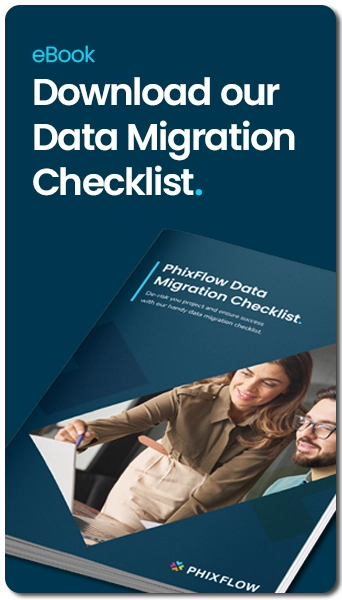Choosing the right data migration approach
Making a well-informed decision about which path to take, well in advance of your project starting, is paramount to the success of your migration.
On the face of it, data migrations should be simple as it is simply the process of moving data from one location to another. There’s a bit more to in fact as there are many factors that will influence the ultimate success of your migration project. One crucial aspect is determining the most suitable data migration approach.
There are primarily two main approaches for data migration projects, each with its own nuances. Making a well-informed decision about which path to take, well in advance of your project starting, is paramount to the success of your migration.
The two primary data Migration approaches
Most data migrations can be categorized into one of the following two categories: the “big-bang” approach and the phased approach. Let’s delve into these data migration approaches in more detail.
Big-bang migration
A big-bang data migration involves transferring all data in a single, major phase. This approach is typically employed when there’s a planned date for decommissioning older systems. All data is prepared and readied for the final migration, followed by a brief window allocated for the data transfer. Subsequently, your new systems will be operational.
While this approach is time-sensitive and demanding, it offers certain key benefits. One such advantage is that users have a clear-cut point in time when they anticipate the transition. This avoids confusion regarding where they should access and process the data used in their daily routines.
Another significant benefit of big-bang data migrations is the minimal downtime required. This is due to the brief time window allocated for the actual migration.
Often, big-bang migrations are less costly than phased migrations, as the legacy and new systems don’t need to run in parallel for extended periods, significantly reducing support and licensing costs.
However, there are potential challenges to be mindful of if this approach is chosen. These can lead to suboptimal customer experiences, staff dissatisfaction, system failures, and outages. Understanding these challenges can help minimize their potential impact on the overall project.
Phased migration
A phased migration involves a series of mini-go-live dates for each phase of the project. Essentially, the migration is broken down into smaller chunks. This means you’ll be running multiple systems simultaneously until all data has been transferred and reconciled.
So, what are the benefits?
This approach allows core IT users and early adopters within your business to transition to the new systems, enabling testing prior to widespread adoption. This facilitates a shallower learning curve as users have more time to familiarize themselves with the new system before it’s used extensively.
Another key benefit is the reduction in downtime compared to the big-bang approach. As the data is migrated incrementally, any required downtime is brief and can be scheduled for periods of minimal system usage.
Phased migrations are also less susceptible to costly errors. This is because the data is processed in smaller chunks at any given time. Any errors that do occur can be rectified more swiftly, and changes to the logic can be made for future phases.
However, like big-bang migrations, phased migrations do have their challenges.
As previously mentioned, phased migrations necessitate the parallel operation of multiple systems. This can often lead to confusion regarding which system holds the most up-to-date data, potentially resulting in poor customer service or inaccurate information.
Multiple systems also present the challenge of differing functionalities. This can result in varying customer experiences depending on the system where their data currently resides.
Assessing potential risks to your business
How do you decide which data migration approach is right for you and your business?
Ultimately, your decision should be based on the potential risks to the business. Consider factors such as cost-effectiveness, the impact on your team’s workload, customer implications, and financial ramifications.
Regardless of whether you choose a big-bang or phased approach, the solution should always be designed to transfer all data from the source system to the target system, error-free, within the specified timeframe.
How PhixFlow approaches data migrations
At PhixFlow, we’re dedicated to ensuring your data migration project is a success. We achieve this by combining our proven methodology, our Professional Services Team and our Data and Development Platform.
Our consultants possess decades of expertise in data migration and have honed their skills through innovation and a wide range of migration projects across various industries and countries.
The simplicity of configuring the PhixFlow platform is one of its greatest strengths. PhixFlow empowers you to fetch data from any source, profile that data, and automate cleansing, corrections, and transformations with confidence.
These capabilities enhance consistency and confidence in data migration through:
- Automated audit trail
- Clear and precise understanding of the current state of the data
- Interactive reporting and visualisations
- Embedded data quality and governance processes
- Decisions and estimates based on accurate and current information
- Optimised staff effectiveness
- Minimised or eliminated need for rework
- On-time and on-budget project delivery
To ensure project success, we adhere to our proven methodology, which is equally applicable to big-bang or phased migrations.
Download our Data Migration Checklist to learn more about how PhixFlow can help your project.
